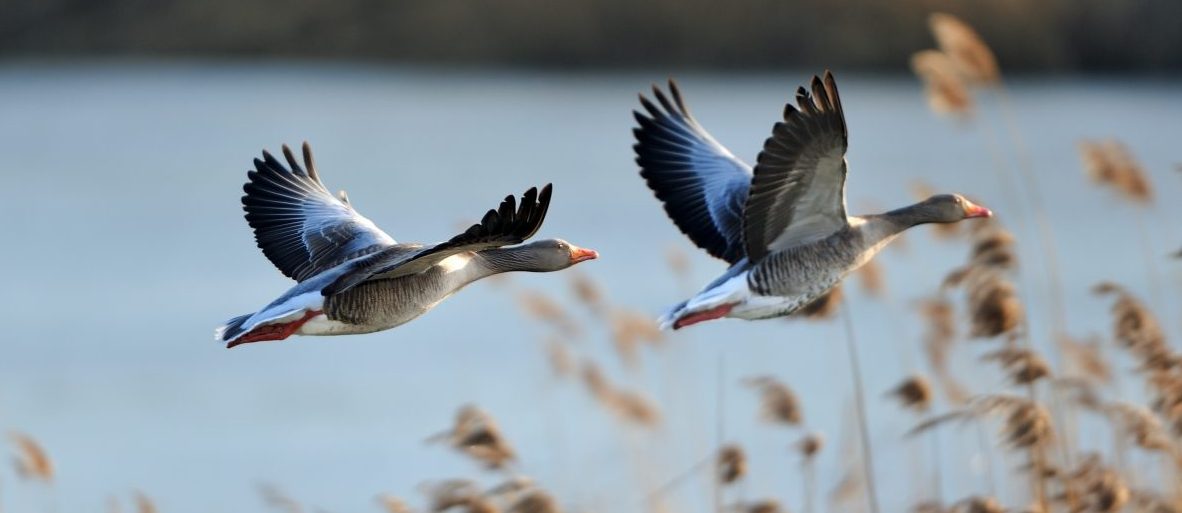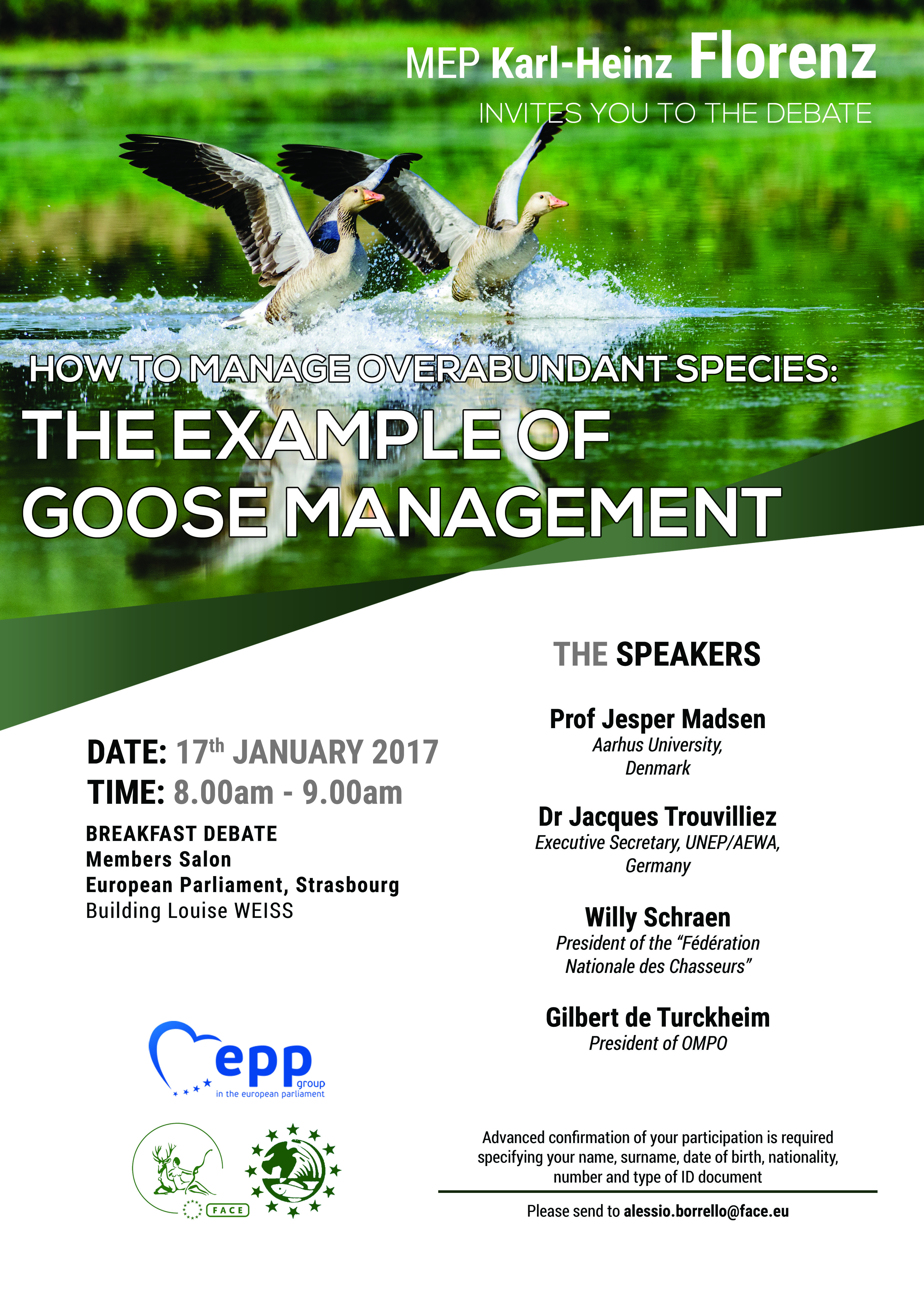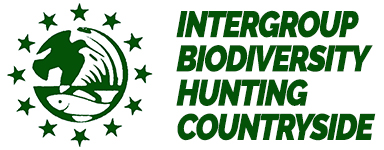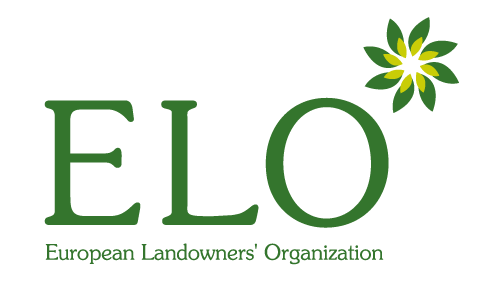
17 Jan 2017 How to manage overabundant species: The example of Goose management
The meeting discussed how adaptive harvest management can inform the conservation and management of Europe’s goose populations, in particular, for abundant and increasing populations of geese. The concept of adaptive harvest management in Europe emerged recently from the AEWA Guidelines on Sustainable Harvest of Migratory Waterbirds and work under AEWA on the Pink-footed Goose and the Taiga Bean Goose, although the process is successfully used in North America.
The debate, organised by the European Federation for Hunting and Conservation (FACE), will be chaired by MEP Karl-Heinz Florenz, President of European Parliament Intergroup “Biodiversity, Hunting, Countryside” and introduced by Gilbert de Turckheim, President of OMPO, the European Institute for the Management of Wild Birds and their Habitats.
Of particular interest to the European Commission and other institutions, the meeting discussed how adaptive harvest management can be applied to all waterbird species in Europe as an innovative measure for their conservation and management. With regard to the populations of overabundant bird species, such as geese, there is a potentially important role for adaptive harvest management to reduce ongoing conflicts associated with agriculture, air safety and biodiversity.



